
Dreaming of an exotic pet? Lizards can be a fascinating and rewarding choice, but they come with unique care needs due to their cold-blooded nature. Lizards are among the most captivating and diverse pets available. With their vibrant colors, unique personalities, and fascinating behaviors, it’s no wonder they’re a top choice for reptile enthusiasts and beginners alike.
If you’re feeling overwhelmed by the sheer variety of lizards, we’ve got you covered. We’ll introduce you to 10 of our absolute favorite lizard species for those new to the reptile world. Whether you’re drawn to the playful antics of geckos or the majestic presence of bearded dragons, you’re sure to find a scaly friend to steal your heart.
Best Pet Lizards for Beginners – Top 10 Picks
In this blog post, we’ll dive into the world of pet lizards, exploring ten lizard species that are particularly well-suited for beginners. We’ll delve into their care requirements, personalities, and unique traits to help you find the perfect scaly companion. Following are the top 10 best pet lizards for beginners and exotic pet enthusiasts:
1. Leopard Gecko
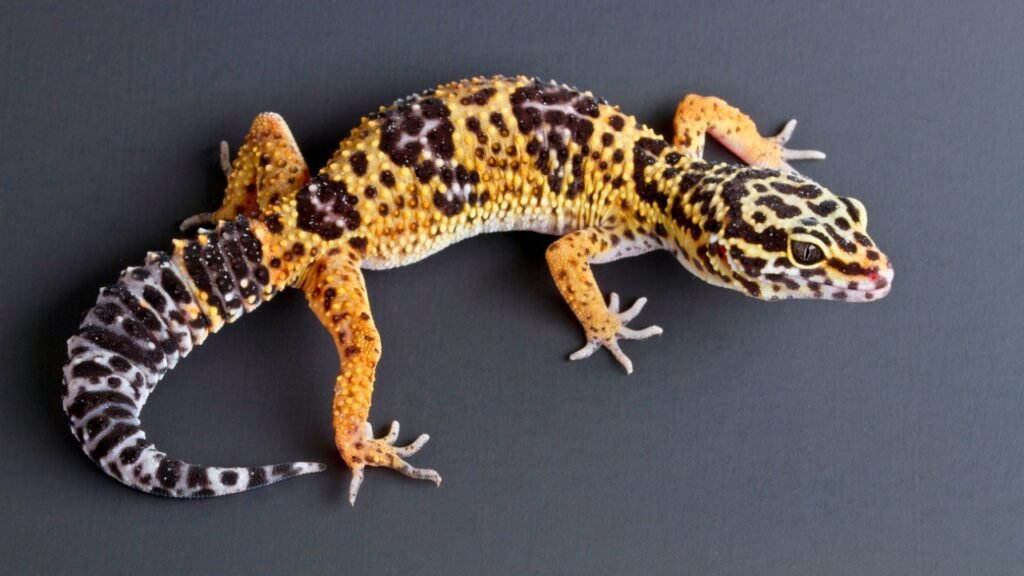
Leopard Geckos (also known as Leos) are a top choice for beginner reptile enthusiasts due to their gentle nature and minimal care requirements. These nocturnal creatures are known for their distinctive spotted patterns and ease of handling. Ideal for those who prefer observing their pets more actively during the evening, Leopard Geckos require a relatively small space and thrive on a straightforward diet of insects, simplifying their nutritional management.
| Features | Details |
|---|---|
| Scientific Name: | Eublepharis macularius |
| Lifespan: | 10-20 years |
| Diet: | Insectivorous (primarily crickets and mealworms) |
| Active Time: | Nocturnal |
| Space Requirement: | Small terrarium with hiding spots and a warm gradient |
| Temperament: | Docile and easy to handle |
2. Bearded Dragon
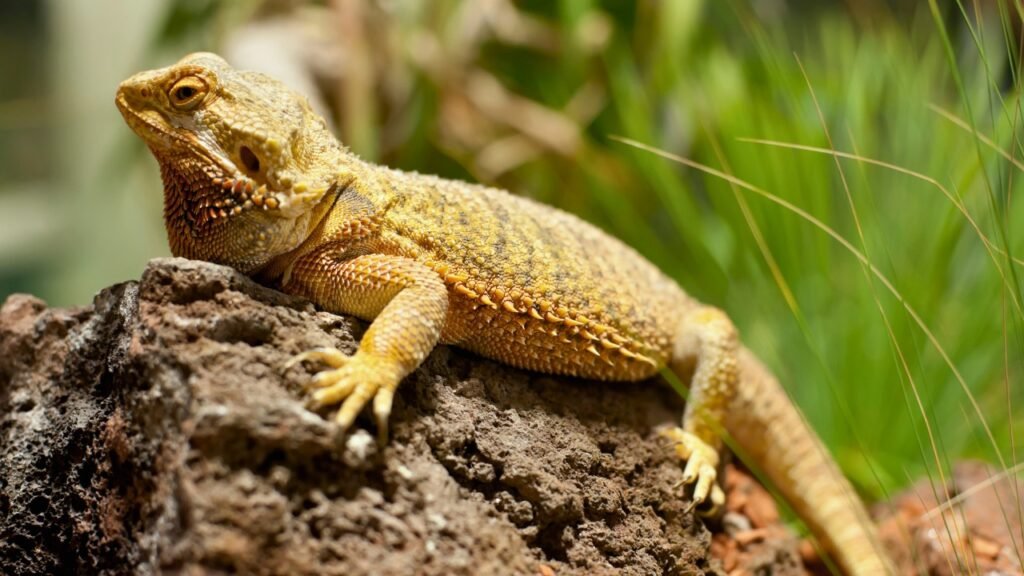
Bearded Dragons are beloved for their sociable nature and striking appearance, often displaying a range of colors. These “gentle giants” are known for their docility and enjoyment of basking in warm spots. Requiring more space due to their size, Bearded Dragons thrive in a well-equipped terrarium that accommodates their need for warmth and varied terrain. They have diverse dietary preferences, enjoying both plants and insects, which makes feeding them an engaging part of their care.
Did You Know?
Bearded dragons can “wave” their arms in a friendly greeting gesture, which is always a delight to witness.
| Features | Details |
|---|---|
| Scientific Name: | Pogona |
| Lifespan: | 8-12 years |
| Diet: | Omnivorous (greens, vegetables, and insects) |
| Active Time: | Diurnal |
| Space Requirement: | Large terrarium with UVB lighting and heat sources |
| Temperament: | Friendly, easy to handle, enjoys human interaction |
3. Crested Gecko
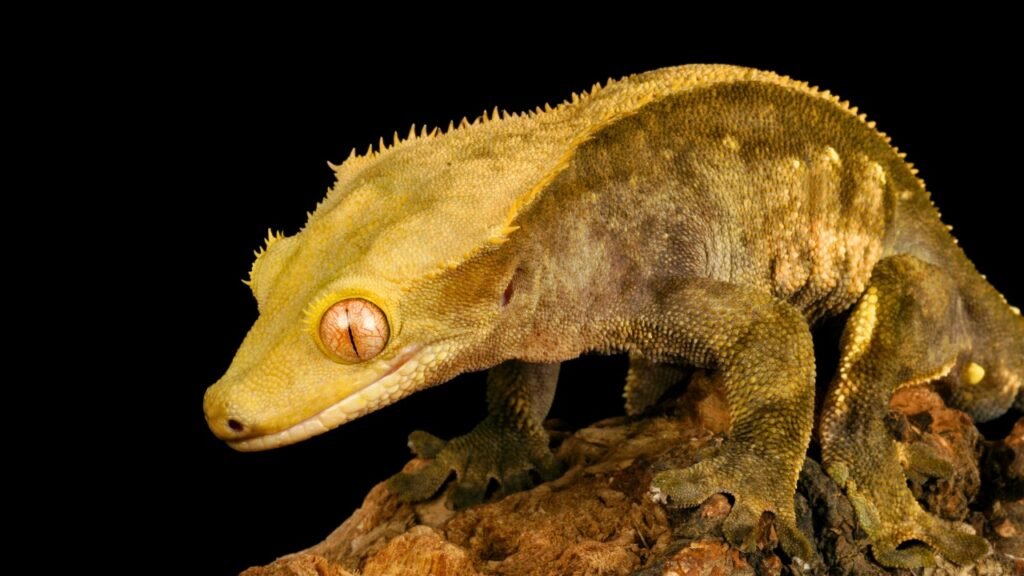
Crested Geckos are an ideal choice for beginner reptile owners due to their straightforward dietary requirements and ease of handling. These arboreal geckos do not require special lighting, which simplifies their housing needs. Known for their friendly personalities and distinctive crests resembling eyelashes, Crested Geckos are relatively low-maintenance. They are available in a variety of color morphs, adding to their appeal.
Expert Tip:
Crested geckos thrive in humid environments, so regular misting is essential to maintain their health.
| Features | Details |
|---|---|
| Scientific Name: | Correlophus ciliatus |
| Lifespan: | 15-20 years |
| Diet: | Omnivorous (primarily fruit-based diet supplements and insects) |
| Active Time: | Nocturnal |
| Space Requirement: | Vertical terrarium with branches for climbing |
| Temperament: | Gentle, easy to handle, social |
4. Uromastyx
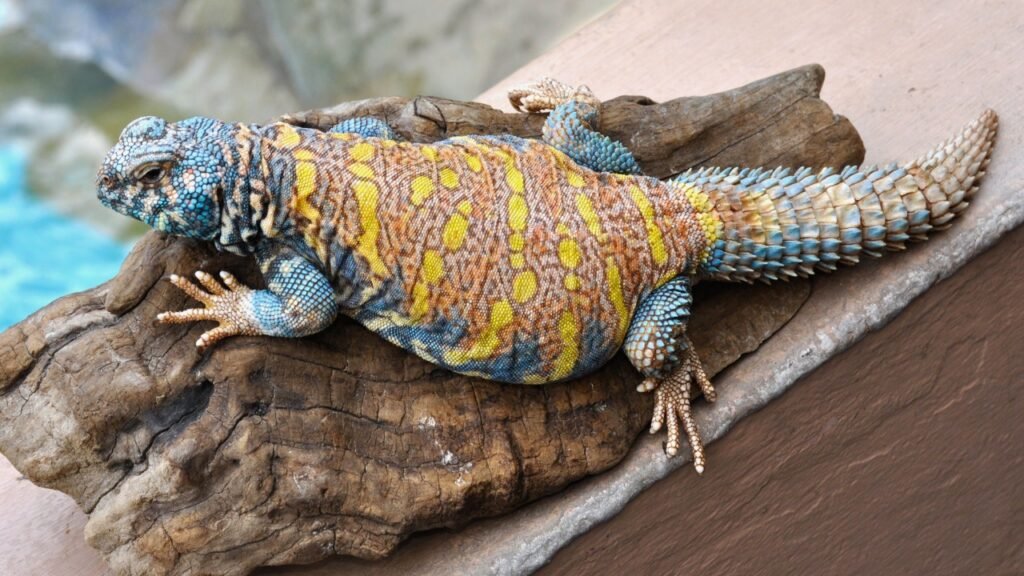
Uromastyx lizards, native to arid regions, are recognized for their distinct spiky appearance and strictly herbivorous diet. These low-maintenance reptiles thrive in environments that replicate their natural dry habitats. While they are relatively easy to care for, Uromastyx lizards require specific conditions such as adequate warmth and minimal humidity to remain healthy. Their unique dietary and environmental needs make them a fascinating choice for reptile enthusiasts looking for a less conventional pet.
Research Insight:
Uromastyx are excellent climbers and burrowers, so their enclosure should provide ample opportunities for both activities.
| Features | Details |
|---|---|
| Scientific Name: | Uromastyx |
| Lifespan: | Up to 15-30 years, depending on the species |
| Diet: | Herbivorous (greens, vegetables, and grains) |
| Active Time: | Diurnal |
| Space Requirement: | Spacious tank with basking areas and controlled temperature |
| Temperament: | Docile, but generally not fond of being handled |
5. Blue-Tongued Skink
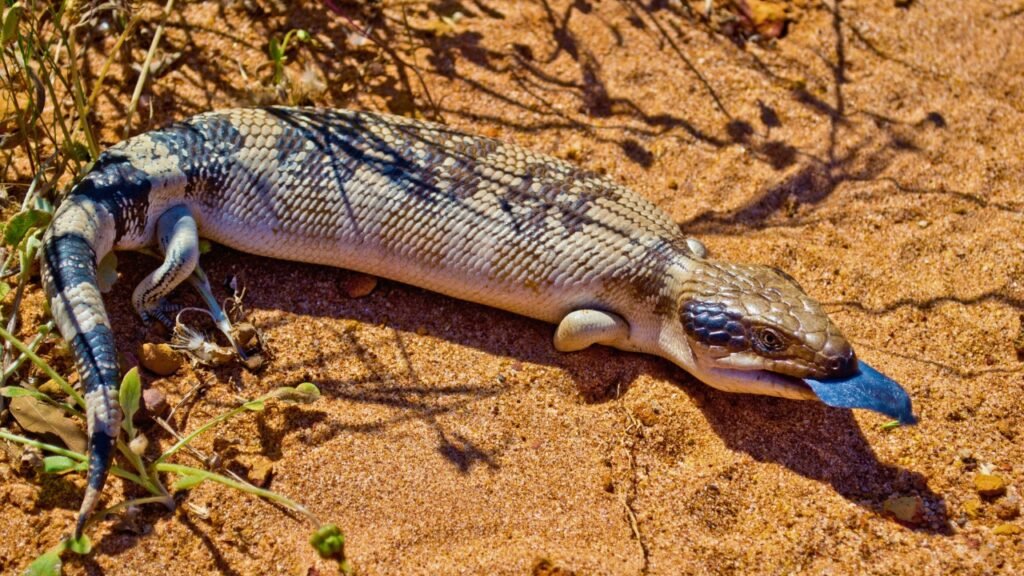
Blue-Tongued Skinks, native to Australia, are notable for their striking blue tongues and larger size compared to other beginner-friendly lizards. These skinks are renowned for their docile temperament, making them excellent pets even for novices. They require more space due to their size but are relatively easy to care for. Their diet is varied, including both plant-based items and proteins, which provides a rewarding challenge for their owners and ensures a balanced nutritional intake.
| Features | Details |
|---|---|
| Scientific Name: | Tiliqua |
| Lifespan: | 15-20 years |
| Diet: | Omnivorous (includes fruits, vegetables, and meat) |
| Active Time: | Diurnal |
| Space Requirement: | Large terrarium with adequate space to roam |
| Temperament: | Calm, docile, suitable for beginners |
6. African Fat-Tailed Gecko
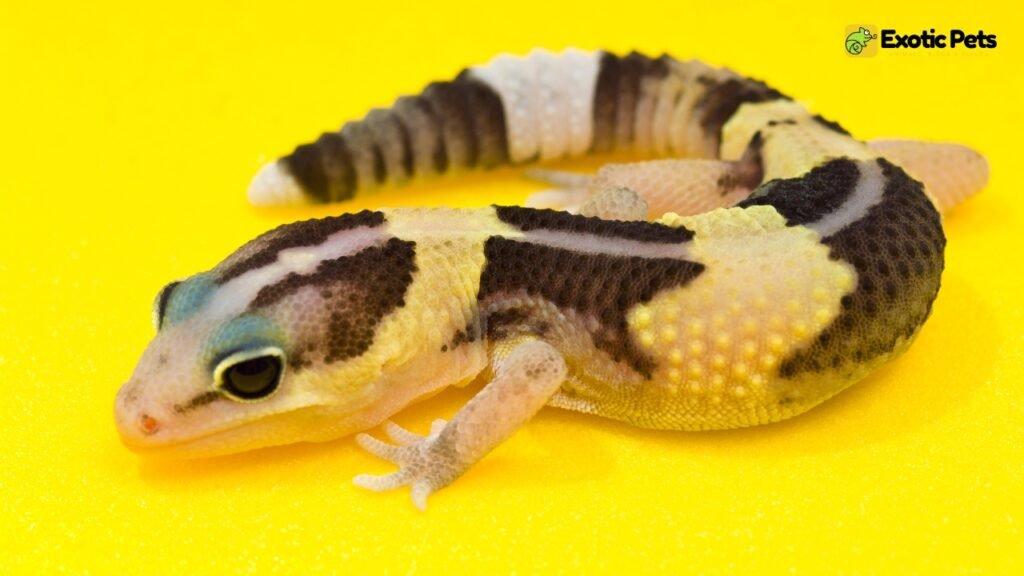
The African Fat-Tailed Gecko offers a unique alternative to the Leopard Gecko, with similar care requirements but less commonality in the pet trade. Known for their easygoing nature, these geckos are distinguished by their plump bodies and ability to store fat in their tails, which is a distinctive adaptation. They are relatively low-maintenance, thriving in a habitat that mirrors that of the Leopard Gecko, and they come in various colors, adding to their appeal as a pet.
Beginner Tip:
African fat-tailed geckos are nocturnal and can be a bit shy, so provide them with plenty of hiding spots in their enclosure.
| Features | Details |
|---|---|
| Scientific Name: | Hemitheconyx caudicinctus |
| Lifespan: | 10-15 years |
| Diet: | Insectivorous (primarily crickets and mealworms) |
| Active Time: | Nocturnal |
| Space Requirement: | Small to medium terrarium with hiding spots |
| Temperament: | Docile, easy to handle |
7. Chinese Water Dragon
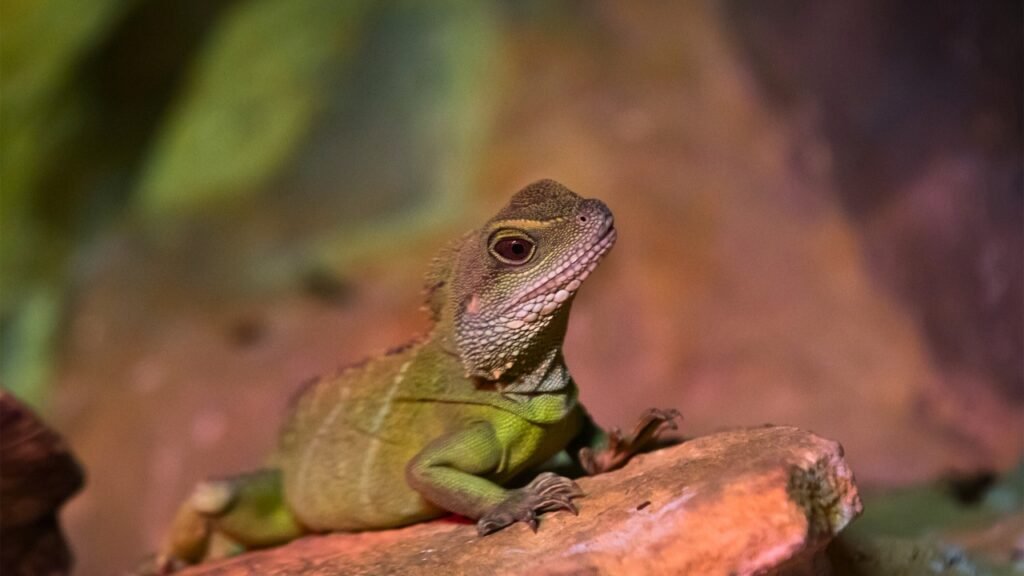
Chinese Water Dragons are captivating semi-aquatic lizards known for their vivid green coloration and remarkable swimming abilities. These active reptiles require a spacious enclosure that accommodates both land and water areas to simulate their natural habitat. While they pose a bit more of a challenge due to their need for a humid environment and large living space, Chinese Water Dragons are sociable creatures that can be handled regularly once they are properly acclimated to their new environment.
Did You Know?
Chinese water dragons can change their color to some extent, depending on their mood or temperature.
| Features | Details |
|---|---|
| Scientific Name: | Physignathus cocincinus |
| Lifespan: | 10-15 years |
| Diet: | Omnivorous (insects, small fish, and vegetables) |
| Active Time: | Diurnal |
| Space Requirement: | Large enclosure with aquatic and terrestrial areas |
| Temperament: | Social, requires regular interaction |
8. Green Anole
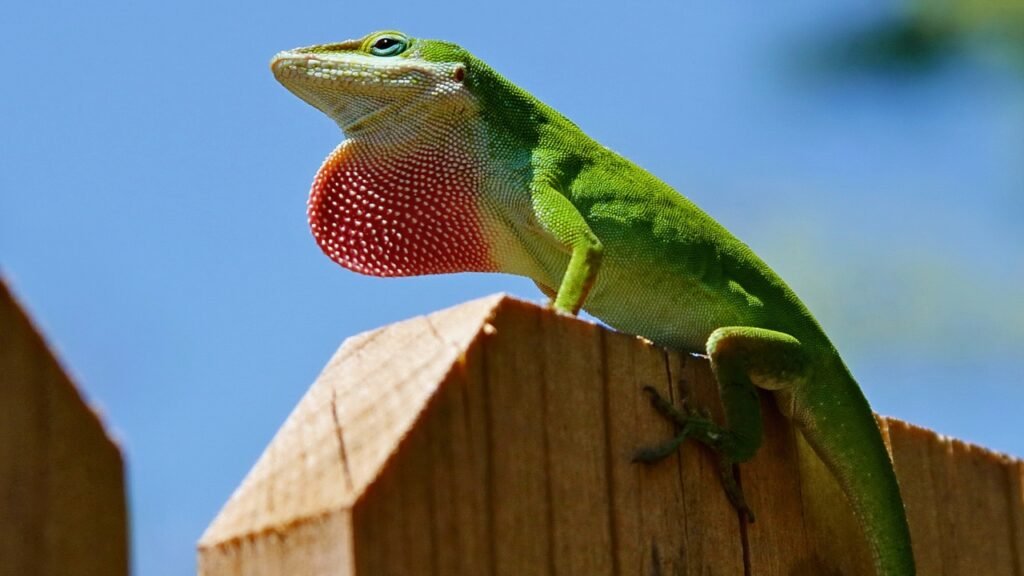
Green Anoles, small and agile lizards native to the southeastern United States, are known for their striking green coloration and ability to change hues, reflecting their mood and environmental conditions. They are relatively inexpensive and straightforward to care for, making them an excellent choice for beginners. Active during the day, Green Anoles display vibrant colors and engaging behaviors. However, potential owners should note that these lizards are territorial and are best housed individually to avoid stress and aggression.
| Features | Details |
|---|---|
| Scientific Name: | Anolis carolinensis |
| Lifespan: | 4-8 years |
| Diet: | Insectivorous (primarily crickets and small insects) |
| Active Time: | Diurnal |
| Space Requirement: | Small to medium terrarium with vertical space for climbing |
| Temperament: | Territorial, best housed individually |
9. Ackie Monitor
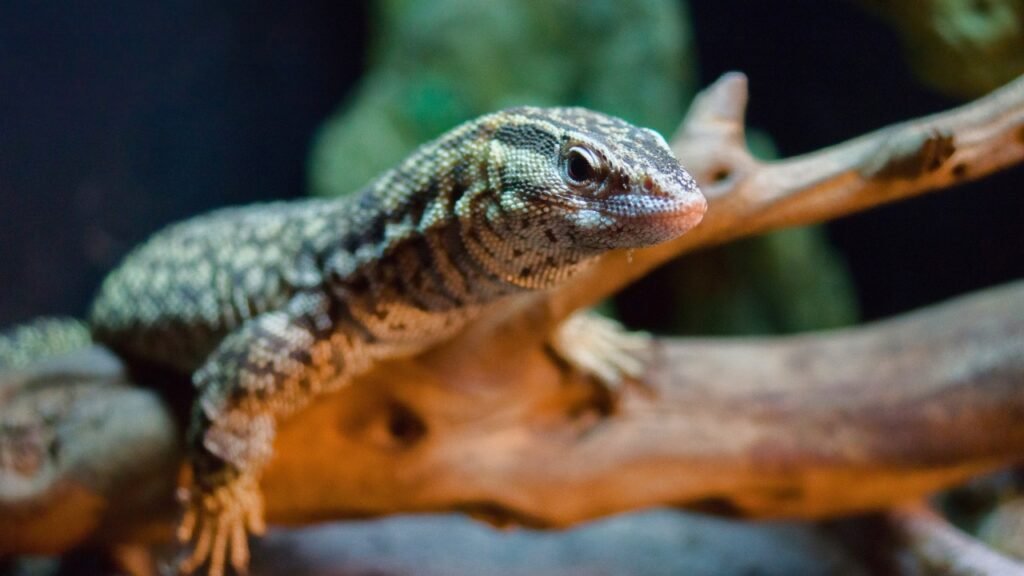
Ackies Monitors, native to Australia, are known for their active and intelligent nature, coupled with playful personalities. These lizards are larger than many beginner species but are still considered tame and manageable with the appropriate setup. They require a spacious enclosure and a diverse diet that includes insects, small rodents, and occasionally eggs. Ackies Monitors offer an engaging pet experience for those who are prepared to dedicate sufficient space and time to their care.
Expert Tip:
Ackies Monitors are excellent diggers, necessitating a deep substrate in their enclosures to satisfy their burrowing instincts.
| Features | Details |
|---|---|
| Scientific Name: | Varanus acanthurus |
| Lifespan: | 15-20 years |
| Diet: | Carnivorous (insects, small rodents, eggs) |
| Active Time: | Diurnal |
| Space Requirement: | Large enclosure with ample space for digging and exploration |
| Temperament: | Playful, intelligent, requires social interaction |
10. Argentine Black and White Tegu
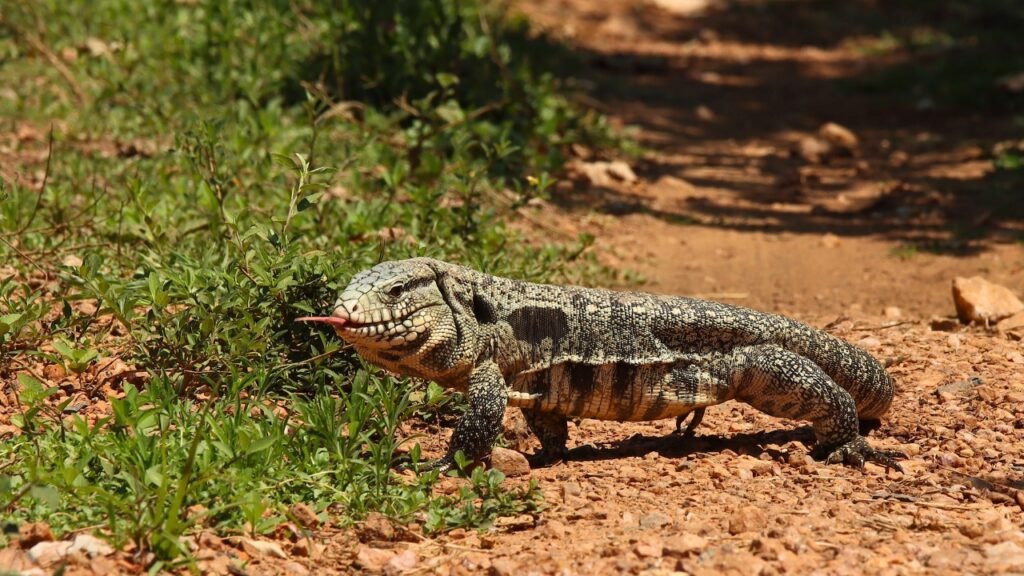
The Argentine Black and White Tegu, native to South America, is celebrated for its large size, intelligent nature, and docile personality. Known for its distinctive black and white coloration, this lizard requires a substantial living space due to its potential size. Their diet is omnivorous, consisting of insects, small rodents, and occasional fruits and vegetables, providing a varied nutritional profile. Owners should be prepared to accommodate their significant spatial needs.
Caution:
Argentine Black and White Tegus can grow to be quite large; it’s essential to provide them with a spacious enclosure to ensure their well-being and comfort.
| Features | Details |
|---|---|
| Scientific Name: | Salvator merianae |
| Lifespan: | Up to 15-20 years |
| Diet: | Omnivorous (insects, rodents, fruits, and vegetables) |
| Active Time: | Diurnal |
| Space Requirement: | Very large enclosure with both basking and shaded areas |
| Temperament: | Docile, intelligent, requires regular interaction |
Benefits of Keeping Lizards as Pets
Keeping lizards as pets offers a unique and rewarding experience. Here are some of the compelling benefits:
Low-Maintenance Companions: Many lizard species are relatively low-maintenance compared to other pets. They don’t need daily walks, litter box changes, or frequent grooming. This makes them a great choice for busy individuals or those new to pet ownership.
Fascinating Adaptations: Lizards have evolved remarkable adaptations for survival. From their ability to regulate body temperature to their diverse behaviors and unique camouflage, observing these traits is both educational and fascinating.
Contained Habitats: Lizards thrive in controlled environments, requiring a properly sized enclosure with specific heating and lighting. This eliminates concerns about destructive chewing or roaming around the house, making them suitable for various living spaces.
Engaging Personalities: While often underestimated, many lizards possess surprisingly engaging personalities. From the playful antics of leopard geckos to the curious nature of bearded dragons, their behaviors can be a source of endless entertainment and companionship.
Owning a pet lizard can be a truly enriching experience. With their unique traits, relatively low maintenance, and captivating personalities, these scaly companions offer a wonderful alternative to traditional pets.
Essential Factors to Consider Before Getting a Lizard
While many lizard species are beginner-friendly, it’s crucial to weigh several factors before committing to bringing one home:
Specific Care Needs: Lizards are not all the same. Each species has unique care requirements regarding habitat, diet, and handling. Are you prepared to provide the right environment, temperature, humidity, and diet for the specific lizard you’re interested in? Be sure to research thoroughly before you decide.
Lifespan and Size: Lizards come in various sizes and have varying lifespans. Some species can live for several years, while others may live for decades. Consider whether you can commit to caring for your lizard throughout its entire life and if you have the space for it to grow.
Financial Commitment: While many lizards have basic nutritional needs, owning one still involves financial responsibility. Factor in the costs of the enclosure, lighting, heating equipment, food, supplements, and potential veterinary care. Be sure you can comfortably afford these ongoing expenses.
Legal and Ethical Considerations: Depending on your location and the species of lizard, you may need permits or licenses to own one legally. Additionally, ensure your lizard is sourced from a reputable breeder or rescue organization to avoid supporting illegal or unethical practices.
By carefully considering these factors, you can make an informed decision about whether a pet lizard is the right fit for you and your lifestyle. Remember, responsible pet ownership is about providing a loving and suitable home for your new scaly companion.
Common Mistakes to Avoid with Your Pet Lizard
The excitement of getting a new pet lizard is natural, but resist impulse buying! Taking time to research will ensure your lizard thrives. Here are some common mistakes to steer clear of:
Inadequate Habitat: Your lizard’s environment is crucial. Incorrect lighting, temperature, humidity, or enclosure size can lead to serious health problems and even shorten their lifespan. Thoroughly research the specific needs of your chosen species.
Poor Nutrition: Just like us, lizards need a balanced diet to stay healthy. Overfeeding or underfeeding can cause various health issues, impacting their longevity and quality of life. Learn about the dietary requirements of your lizard and provide appropriate food.
Mishandling: Not all lizards enjoy being handled. Some tolerate it, while others prefer minimal interaction. Forcing handling can stress your lizard, potentially leading to injury or even death. Research how much handling your species can tolerate and always do so gently.
By avoiding these common pitfalls, you’ll be well on your way to providing a happy and healthy home for your new scaly companion. Remember, a well-informed lizard owner is a happy lizard owner!
Conclusion
Lizards are captivating creatures that can bring immense joy and fascination to their owners. With proper care and attention, they can thrive in captivity and provide years of companionship. Whether you’re drawn to the playful antics of geckos or the majestic presence of bearded dragons, there’s a pet lizard out there waiting to become your scaly friend.
Choosing a pet lizard involves considering the animal’s size, diet, and the environmental adjustments you’ll need to make in your home. Each lizard listed here has its own set of benefits and requirements, and the right choice depends on your lifestyle and willingness to commit to the care needed.
Remember: Before acquiring any pet lizard, thoroughly research its specific care requirements and ensure you can provide a suitable environment. With the right knowledge and preparation, you’ll be well on your way to a rewarding journey into the world of lizard keeping.
Expert input provided by Dr. Micah Woods, DVM, an exotic pets veterinarian at Ooltewah Veterinary Hospital in Chattanooga, Tennessee; and Dr. Ross Bernstein, DVM, an emergency veterinarian based in Los Angeles.







